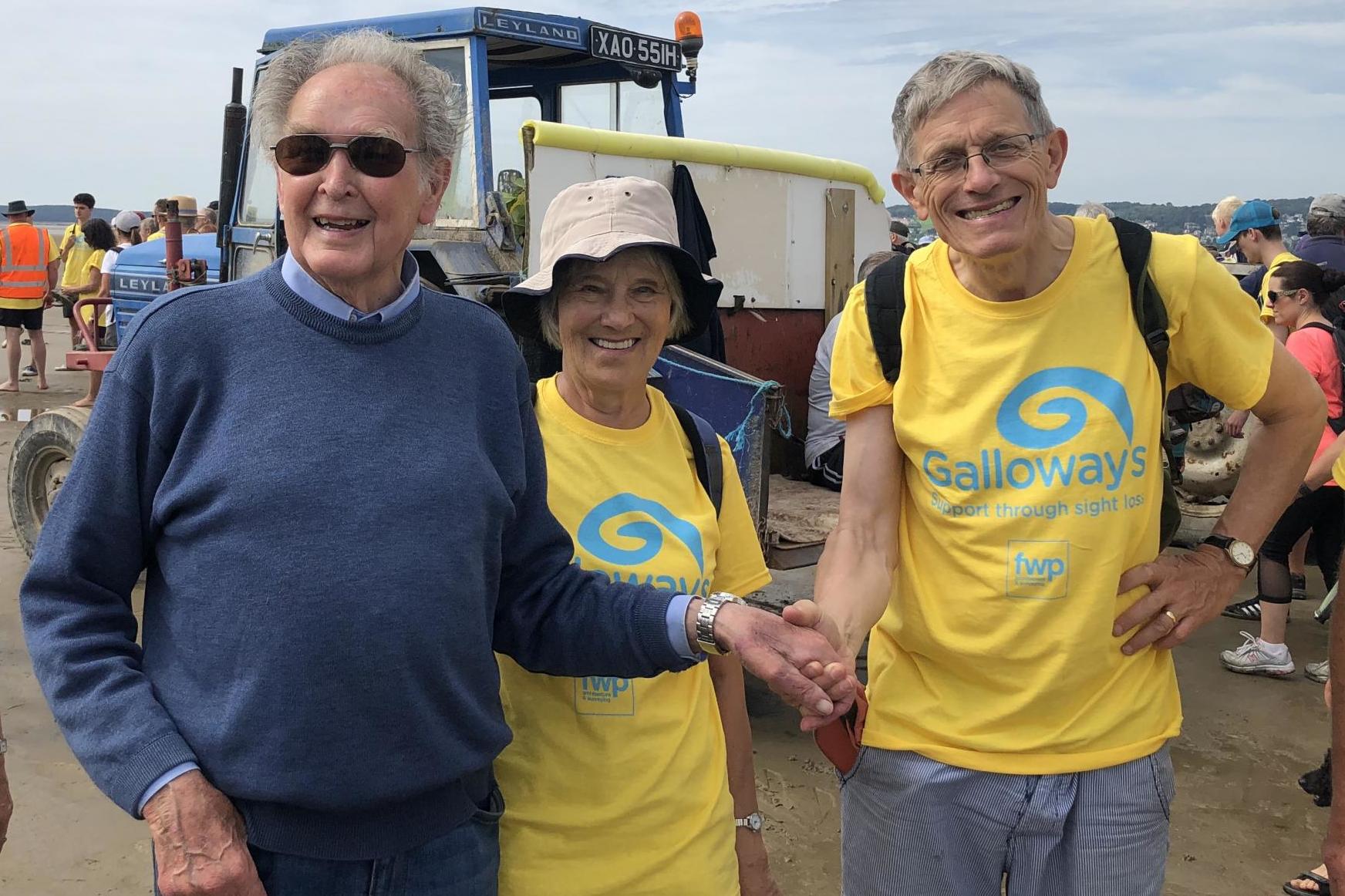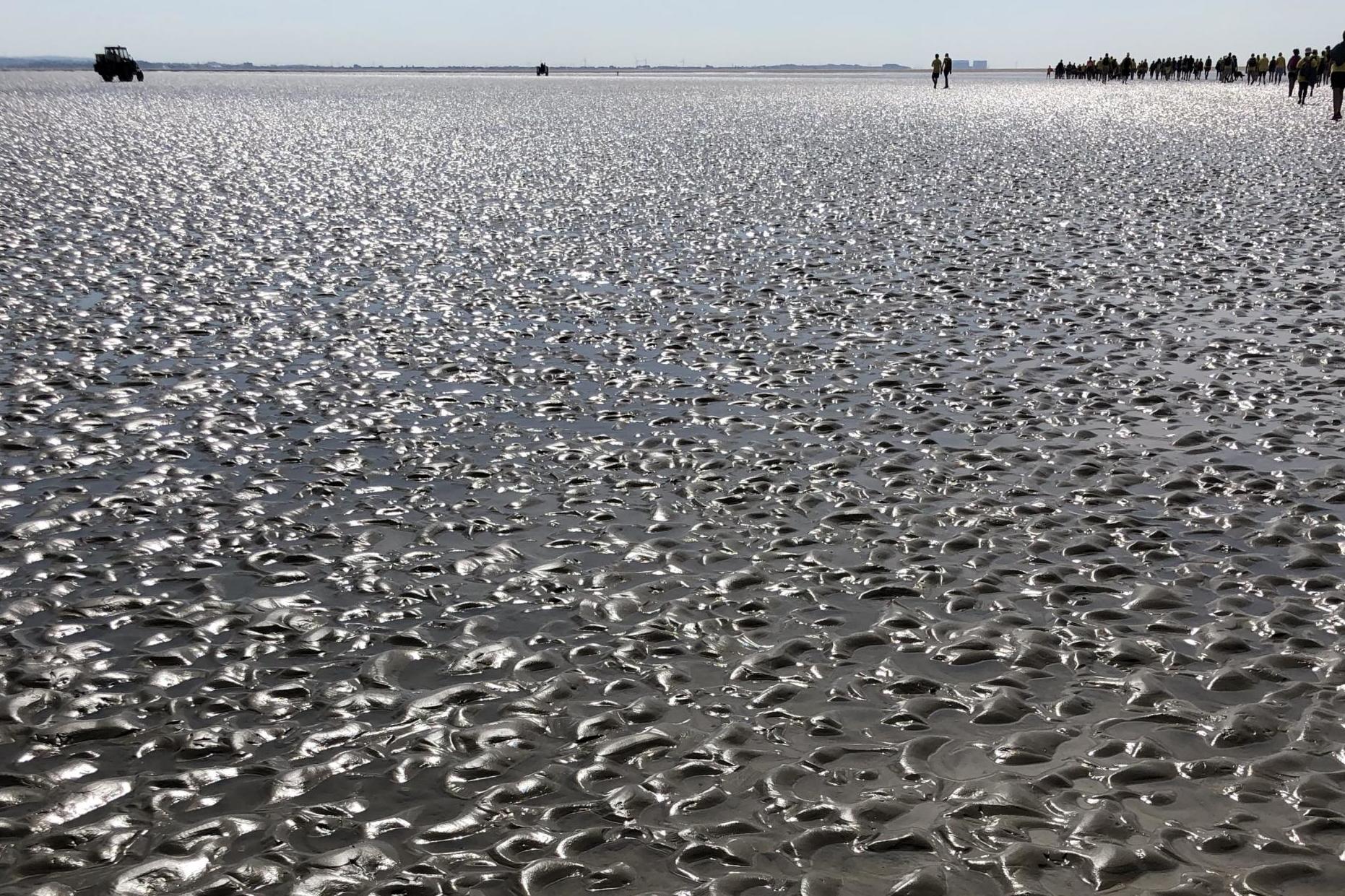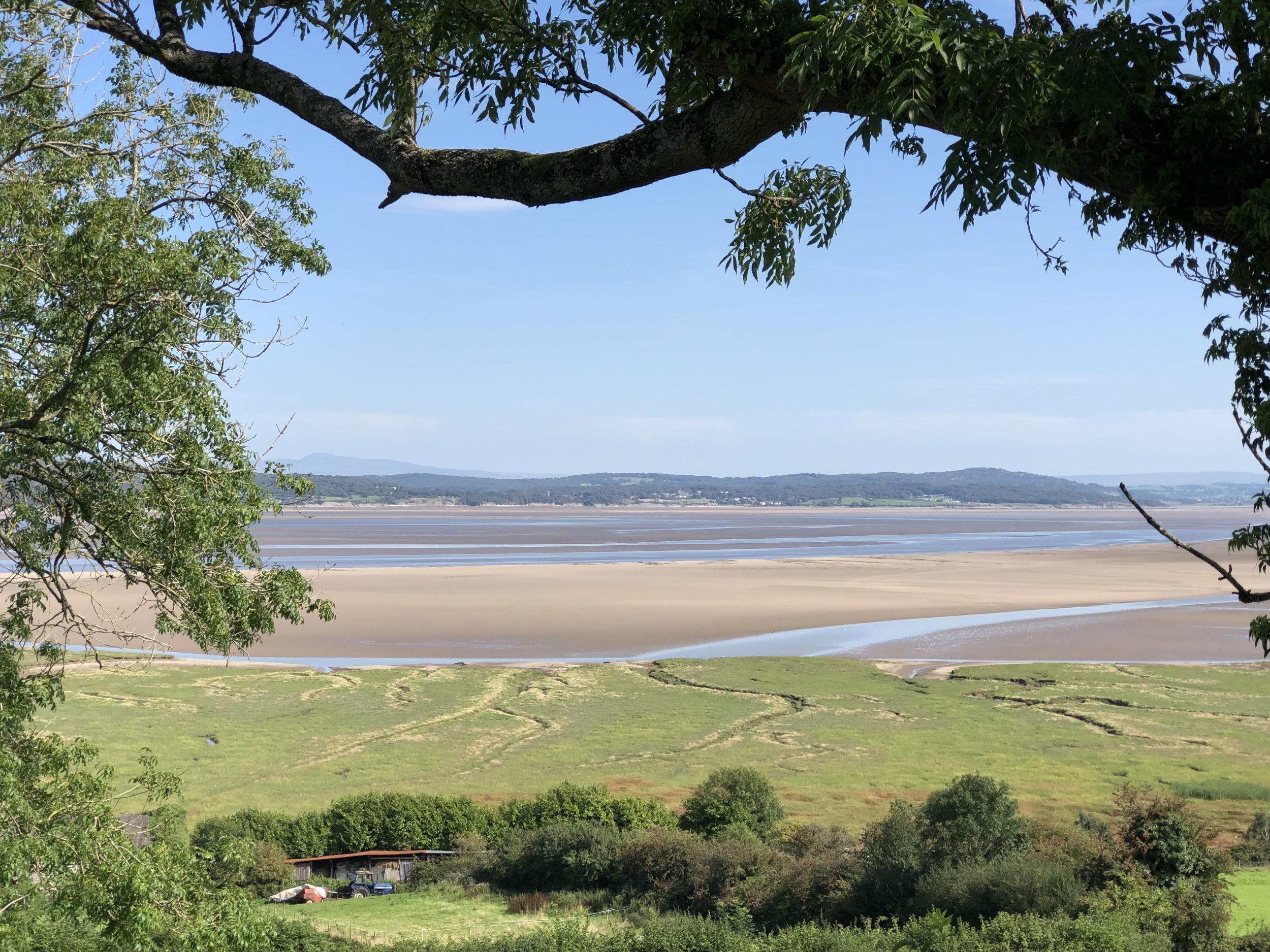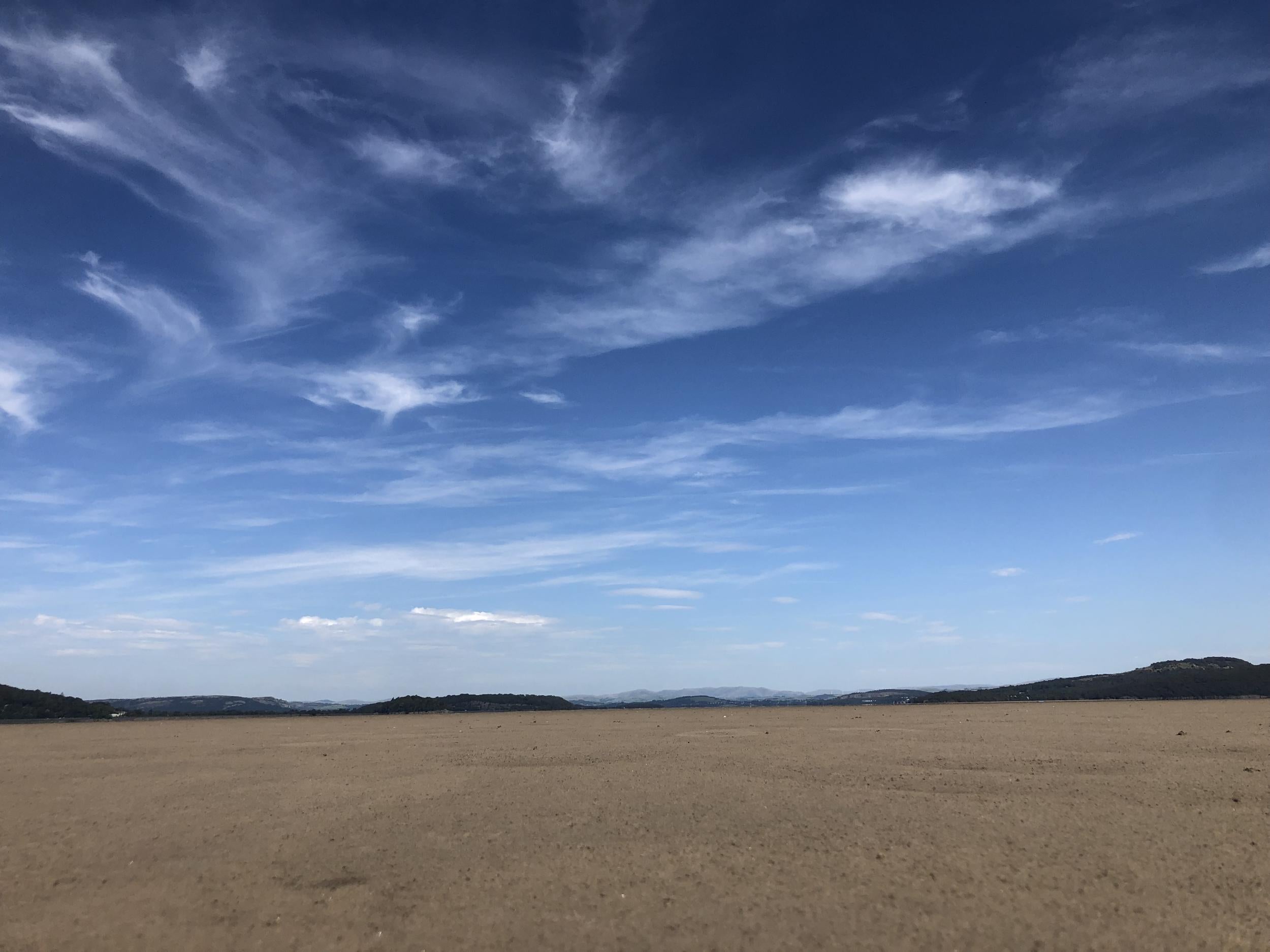Sands and time: from Lancashire to Cumbria in bare feet
Seven adventures in seven days: a seabed stroll across Morecambe Bay
You can’t fault Google Maps for optimism. At 1pm on Saturday the dark blue dot placed me, accurately, in the middle of the light blue of Morecambe Bay, a mile from the nearest shore.
“Try restaurants, coffee,” it advised. At that moment, though, my immediate concern was to ford the channel formed by the River Kent as it rushes from the highlands of Cumbria to the sea.
The Ordnance Survey map carries a red alert: “Public Rights of Way across Morecambe Bay are dangerous. Seek local guidance.” And if you Google “Across Morecambe Bay”, you learn that it is feasible to take a seabed stroll only in the company of an official guide on an organised expedition.
Every 12 hours and 25 minutes, the moon’s gravity drags the water from Morecambe Bay. But the tides and the terrain that lies exposed can be perilous. In 2004, 23 Chinese cockle-pickers drowned in the bay when they were cut off by rising tides. The tragedy showed the risks of venturing out on to the sands without a local expert.
For 56 years until this summer, that meant Cedric Robinson. He had left school at 14 to work with his father on the bay.

“I went fishing with a horse and cart, cockling, musselling, setting the nets,” he told me.
In 1963, The Beatles became famous, and Cedric became the Queen’s Guide to the Sands.
He dined with his employer three times. “She’s lovely, she took a liking to me. Prince Philip was a bit jealous.”
But with Cedric on hand, the Duke of Edinburgh once drove a carriage across the sands.
For a safe barefoot journey from Lancashire to Cumbria, I signed up for the sight loss charity, Galloway’s.
Around 400 of us enrolled; the maximum is a mammoth 450. We met at 11am on Saturday at the bayside village of Arnside, where each of us was given a bright yellow T-shirt to make herding more manageable.
A serious adventure needs a serious base camp, and the Posh Sardine proved ideal. The “Vintage Tearoom and Giftshop” dispenses homemade scones and coffee that matches exactly the shade of mud out in the bay when it empties.
For centuries, Morecambe Bay provided the transport link from “mainland” Lancashire to a detached part of the county: North Lonsdale, at the foot of what is now Cumbria. Until the railway opened in 1857, mail coaches ran across the sands.
“Sands” is appropriate for some of the terrain exposed by the action of the moon’s gravity: a hard-packed surface that you could land a Jumbo jet upon. But more of the surface is made of mud, sculpted by the tide into a strangely lunar landscape. That moon again.


Timing is everything, and at 4pm sirens would announce the arrival of the Arnside Bore. (Not a chap who drones on endlessly about how Lancashire was robbed of its annexe in the 1974 local government reorganisation, but a tidal rush so powerful that it creates a wall of water, around two hours before high tide.)
For the first couple of miles we edged down the shore to White Creek. Then a whistle from the new Queen’s Guide, Michael Wilson, signalled the move out into the bay.
Much of the hike is across exposed terrain, anchored in places by tenacious grasses. But the sea is constantly shifting the safe course. We followed a zigzag course rather than the intuitive walk straight across.
The path is marked by boughs of laurel, and walkers are ushered by a couple of tractors whose rusty demeanour looks almost medieval.
“Try petrol stations, cash …” urged Google Maps as the herd moved gingerly onwards.
Time is one enemy; quicksand is the other. Even the best route cannot avoid some small patches of glutinous jelly that seem to swallow each footstep.
When you are walking in such unfamiliar circumstances, it is natural to focus on what’s under foot. But gaze around to appreciate the superb surroundings. Beneath a vast sky, the mountains of Cumbria rise to the north, the fells of Lancashire to the east.
The ribbon of coastline on the southern horizon includes Morecambe, the Victorian resort that took its name from the bay, and the site for the Eden Project of the North – a tourist attraction that will celebrate the biodiversity of the bay.
Beyond it, the faint silhouette of the only cliffs in Lancashire, at Heysham, and the bold outline of a nuclear power station – also at Heysham.

The most extreme walking comes close to the end, when you splash through thigh-deep water. A vast amount of rain bombarded the Lakes a few days earlier, and is now being coaxed by Earth’s gravity into a torrent.
A number of fellow walkers had four legs, and the dog owners scooped them up to carry them through and safely out the other side.
Ahead, across salt marsh fretted with gullies: the southern fringe of Cumbria, and specifically the village of Kents Bank. It has a handy railway station to allow hikers to rattle around the bay and back to Arnside. After a five-mile walk, that is a tempting option. But another half-hour hike, east towards Grange-over-Sands, lifts you high above the mighty bay and reveals the scale of your achievement.
Then descend to the promenade of this prim Victorian resort, look out across the bay and marvel at the special relationship between the earth, the moon and Morecambe.
For the summer 2020 walk schedule, see guideoversands.co.uk/events/
Join our commenting forum
Join thought-provoking conversations, follow other Independent readers and see their replies
Comments
Bookmark popover
Removed from bookmarks